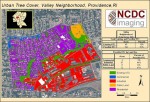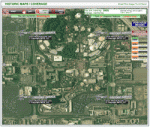
Thursday, June 26th, 2008
Two of the fundamental questions natural resource managers should pose to themselves from time to time are: “What is it that is being managed and over what time frame?”. In this article I will delve into these questions using the boreal forest as an example and consider the consequences of the answers for natural resource

Wednesday, June 25th, 2008
The Free State of Saxony in Germany has been developing a forest management system that has evolved into the Saxon Forest Geographical Information System (FGIS). The system not only supports forestry but it integrates tightly into the wider Saxony Spatial Data Infrastructure (SDI). Both government agencies and citizens can access the system, sharing information and

Sunday, June 8th, 2008
How do we retrace our ecological footprints? Where will the footprints lead? Scientists at the Woods Hole Research Center (WHRC) are tracking carbon footprints across the globe starting with U.S. forests. One ongoing study, using geographic information system (GIS) technology, is measuring the carbon-rich biomass in heavily wooded areas to indicate the effect that deforestation and

Sunday, June 1st, 2008
While we know and understand that the Earth’s climate undergoes natural cycles of glacial and inter-glacial events, there is widely accepted and mounting evidence to suggest that we are accelerating this natural phenomenon and that the changes in global climate are largely due to the amount of greenhouse gases (GHG) in the atmosphere. Human activities,
Sunday, May 18th, 2008
Soon, if it has not already happened, the majority of the human species will live in sprawling cities. As urban density moves forward, the need to understand the dynamics of a particular urban region, the interrelationships between population, land use, transportation, economics, environment, and other factors is crucial to effectively develop policies and determine where

Sunday, May 11th, 2008
You do not have to be in the geospatial industry to be amazed at images of recognizable locations. Everyone is curious to see a satellite image of his or her home or other areas of interest. In addition, an increasing number of organizations are also realizing the value of imagery, when combined with other geospatial

Saturday, May 3rd, 2008
Geographical information systems (GIS) can offer tangible benefits for those charged with the management of our transport network. However, even with sophisticated spatial analysis tools, advanced display options and compatibility with other systems GIS is just another piece of software if proper consideration is not given to the data held and accessed by the system.
Monday, March 31st, 2008
The ESA-FAO GEOportal is a gateway to Global Earth Observation data, information and services developed by the European Space Agency (ESA) in collaboration with The Food and Agriculture Organization of the United Nations (FAO) as contribution to GEOSS.
Saturday, March 29th, 2008
After a succession of recent reports on climate change, almost everyone agrees that cleaner forms of energy to power the global economy are a good idea. Few would disagree that renewable energy sources such as the wind and sun are desirable options to this cleaner energy path.
Wednesday, March 12th, 2008
The construction of the Northern link is one of the biggest road and tunnel projects in Sweden in terms of scope and budget with a cost of SEK11.6 billion. The procurement of contracts is also extensive. All in all, there will be about 40 contracts for the construction works.